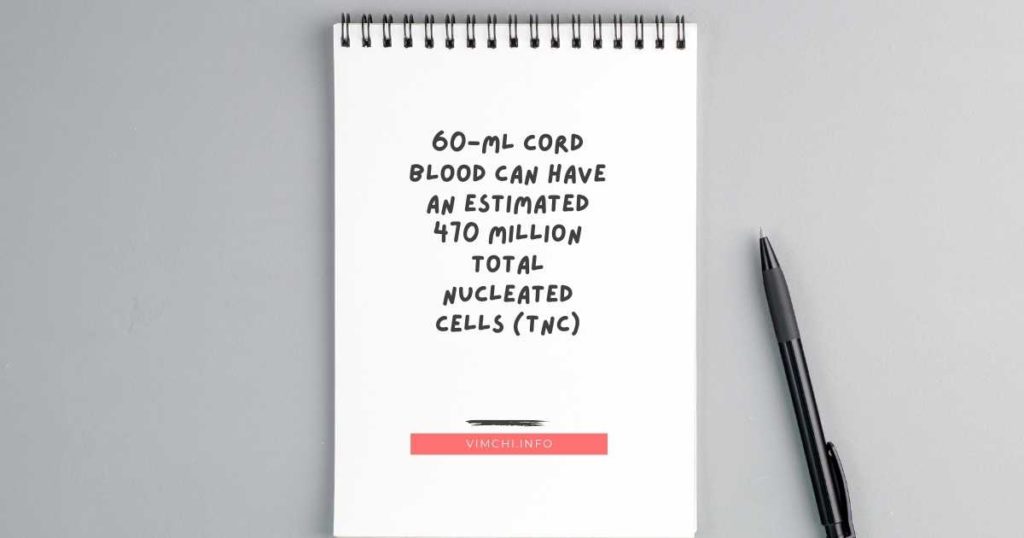
Cord blood stem cells have become a part of the conversation of many expectant mothers these days. Some of them are pondering banking their child’s cord blood. They are willing to pay hundreds or thousands of dollars just to make sure that their child’s cord blood is preserved properly. But one of the questions they have is, “Can cord blood stem cells be multiplied?”
Keep reading to find out more.
Can Cord Blood Stem Cells Be Multiplied?
These stem cells can be obtained from the umbilical cord after childbirth. But they can only be collected with the mother’s permission.
Typically, the tissue is discarded. It has a medical value that’s often considered a medical waste by many hospitals.
With the advancement in technology, more and more women opt to preserve their child’s cord blood. To preserve it though, they have to pay hundreds or thousands of dollars to save the cord blood in a cord blood bank.
Now, the main question is can these stem cells be multiplied? When cord stem cells are removed from the body, they replicate more efficiently compared to adult stem cells.
When a cord stem cell is placed in a petri dish with sufficient nutrients, it can multiply into 1 billion cells within 30 days. An adult cell, on the other hand, multiples around 200 cells in one month.
For that reason, cord stem cells are being used now to treat some autoimmune diseases. These would include the following:
- Rheumatoid arthritis
- Lupus
- Multiple sclerosis
Related: Can Stem Cell Cure MS?
These stem cells may also treat chronic infections, such as Lyme disease and herpes.
How Many Stem Cells are in Cord Blood?

60-ml cord blood can have an estimated 470 million total nucleated cells (TNC). Thus, a full-term baby has more than a million blood-forming stem cells. But most public cord blood banks keep collections that are bigger than average.
How Many Times can Cord Blood Be Used?
Cord blood can only be used once. When it has been used, it is discarded. If you are banking your child’s cord blood for future use, keep in mind that the chance that your child will utilize it over the lifetime is between 1 in 400 and 1 in 200,000.
In other words, it is rare to see that a child will use his/her cord blood. In the last two decades, there have been over “400 autologous cord blood transplants in the US.” But there have been more than 60,000 unrelated donor cord blood transplants around the world.
That’s why many doctors don’t agree with cord blood banking.
But cord blood banking makes sense if your child or sibling has a certain condition that can be treated by a cord blood transplant. If you are planning to save your child’s cord blood, you should talk to your doctor. He/she can give you insights into cord blood banking.
Your doctor may advise it or against it.
Is It Worth Ito Save Your Child’s Cord Blood?
When you see an ad about private cord blood banking, you will find that the ad’s gist is always protecting what matters most to you. But is it worth it?
The answer can be complicated.
For many doctors, cord blood banking only makes sense if a first or second-degree relative requires a stem cell transplant because of a certain disorder. And if one of your family members has a genetic disorder, such as sickle cell disease, then cord blood banking can be worth every penny.
However, private banking can be a gamble. The reason for this is that there’s no guarantee that your banked blood will contain usable stem cells.
Furthermore, if you have a certain genetic condition, you can pass it on to your baby-making the stem cells unusable.
In that case, if your family doesn’t have a blood disorder or a genetic disease, the chances of using your baby’s cord blood may be small. Some of the private cord blood banks release their units for clinical trials. The cord blood units are rarely used for the child herself/himself.
This is one of the reasons doctors encourage expecting mothers or facilities to consider public banking, instead. It’s not because the cord blood won’t benefit them but because the blood might save someone else.
Deciding to Save Your Child’s Cord Blood
You must choose carefully. Keep in mind that banking your child’s cord blood isn’t that cheap.
Related: Cord Blood and Tissue Banking Cost
Nevertheless, if you’re thinking of saving it, you should plan to make a final decision during your second trimester. Remember that there are preparations required to collect the cord blood. For instance, you need to ensure that the hospital has the right equipment to collect it.
You also need to notify the cord blood bank that you wish to use so you get the kit before you give birth. Keep in mind that it can take a few days to receive the kit. However, most private cord blood banks may rush to deliver it to you directly if you make a last-minute decision.
On the other hand, you may decide to donate cord blood. It costs nothing. Furthermore, it requires minimal planning. However, you still need to make sure that the hospital where you are planning to give birth will accept cord blood collection.
Whether or not cord blood banking is worth it is a personal decision.
Final Thoughts
Can cord blood stem cells be multiplied? Yes. On average, it can multiply to a billion cells. But if you’re planning to save it, you should understand the benefits of a cord blood registry here.
Speak Now ... Or Forever Hold Your Peace